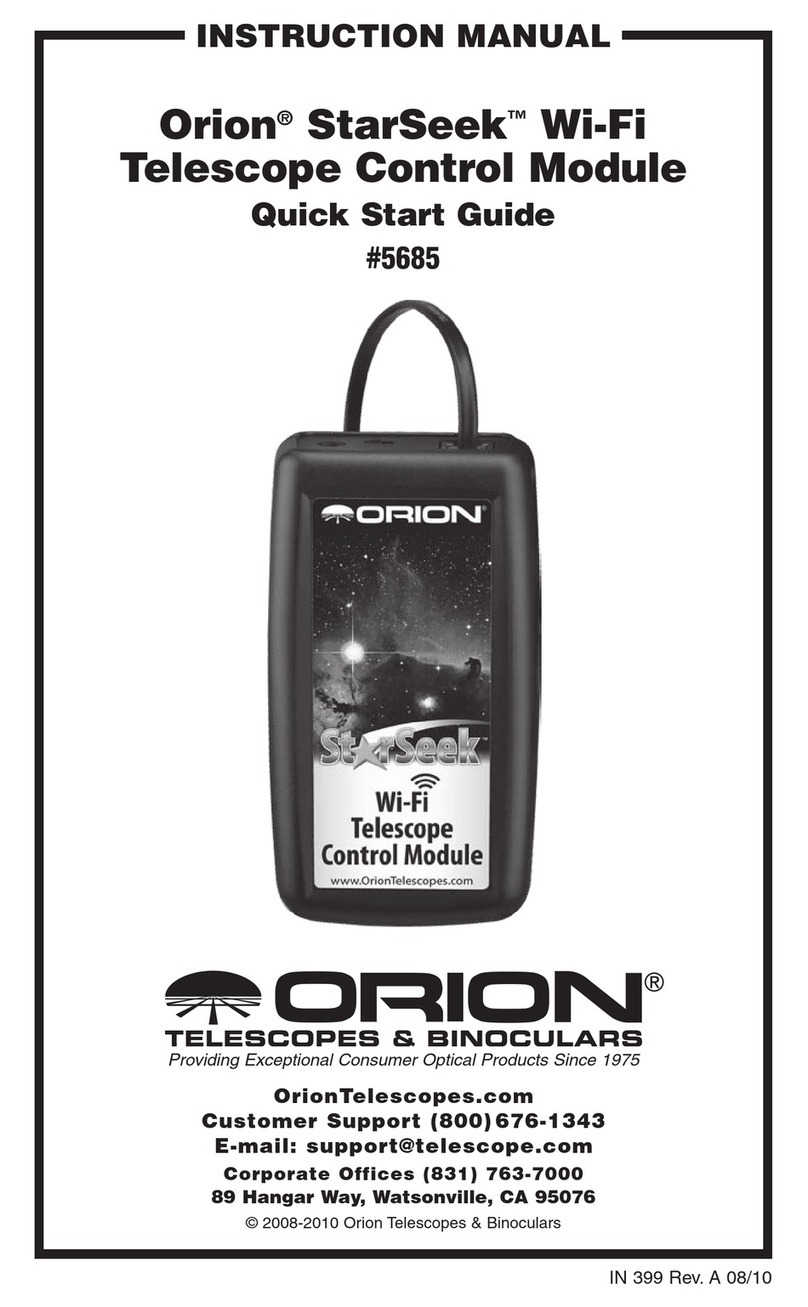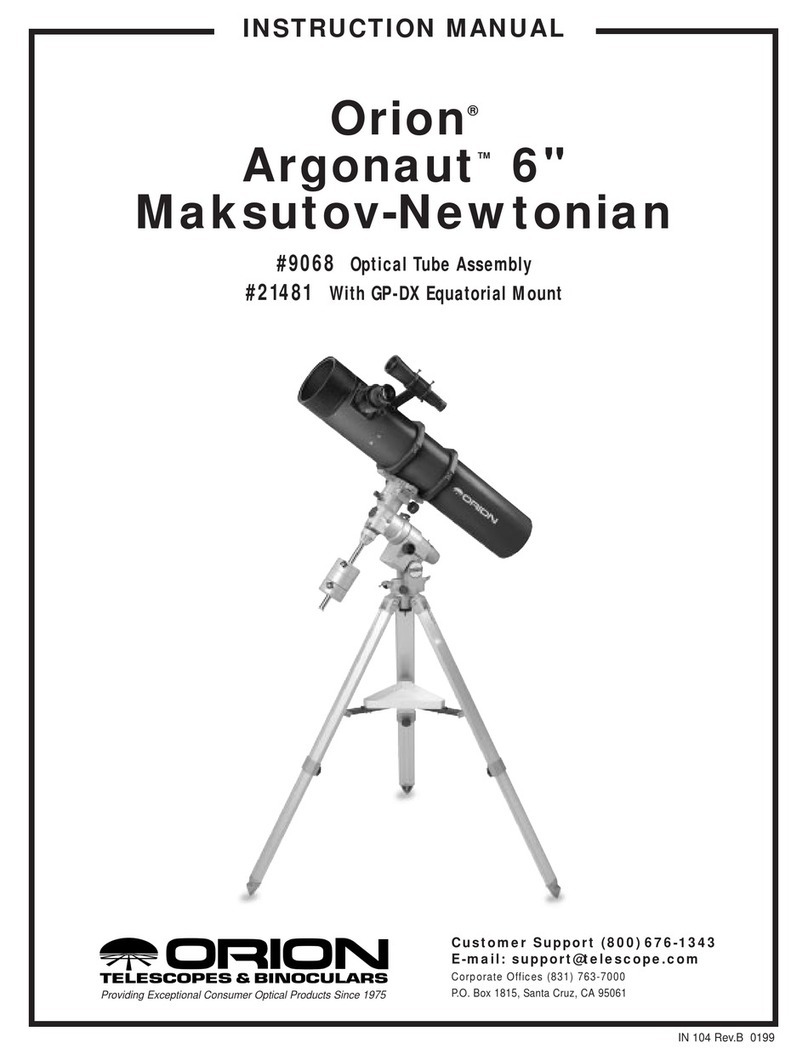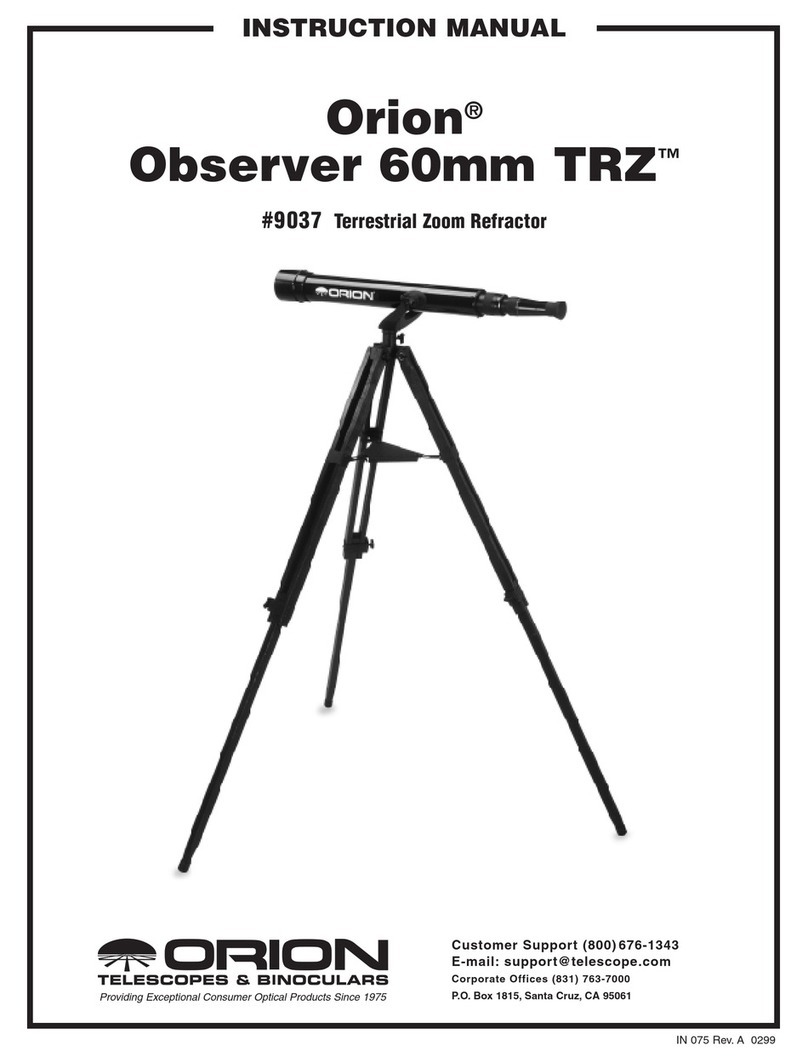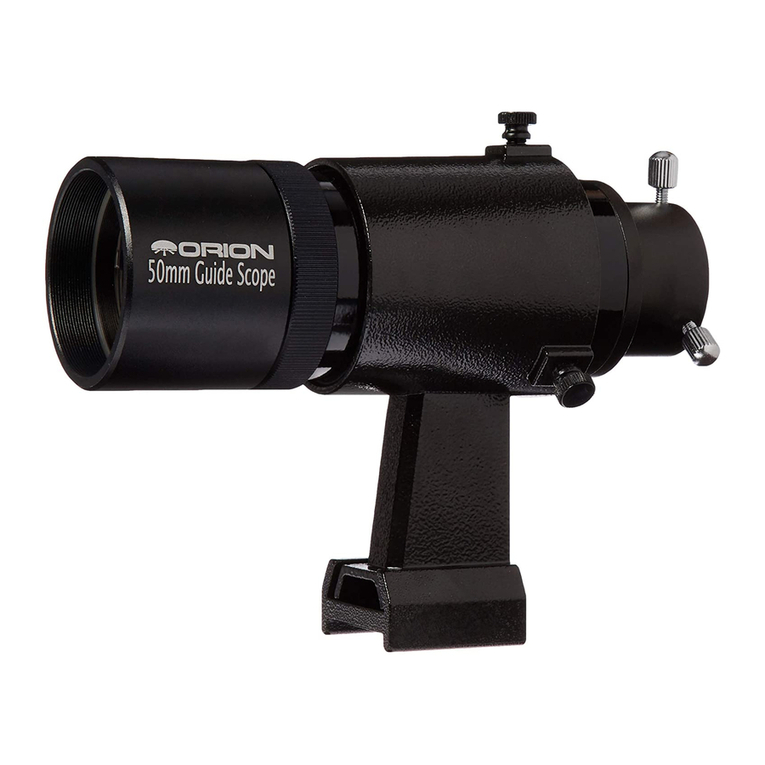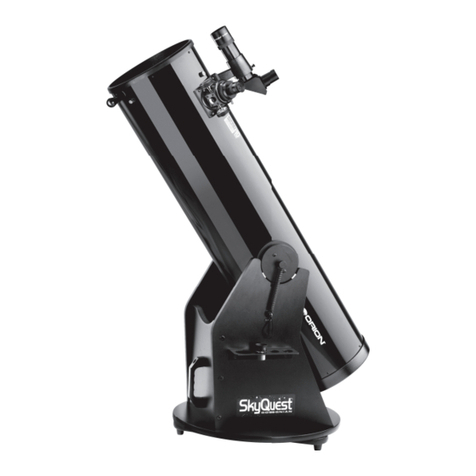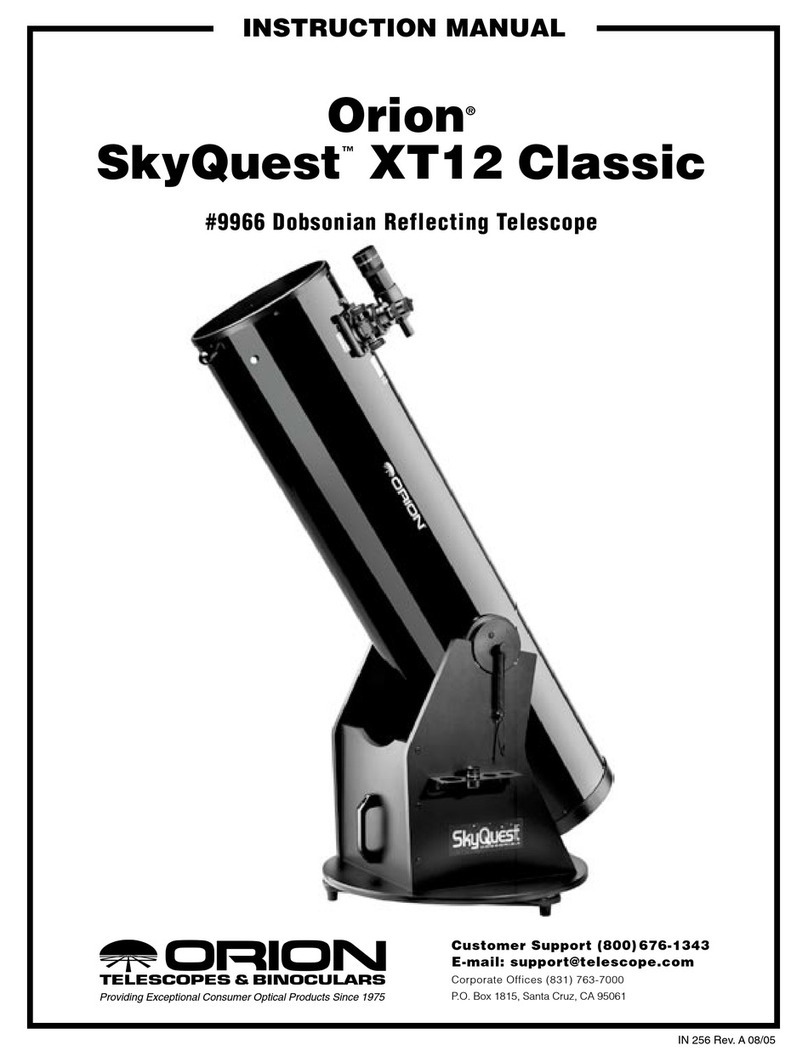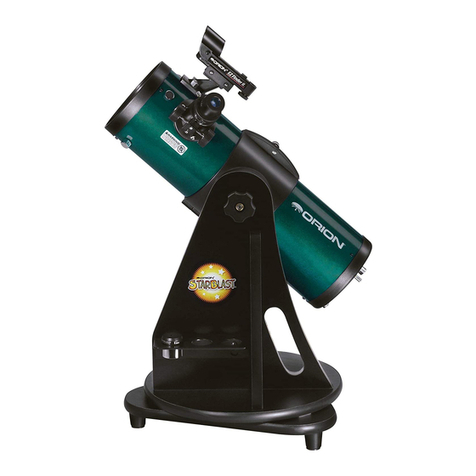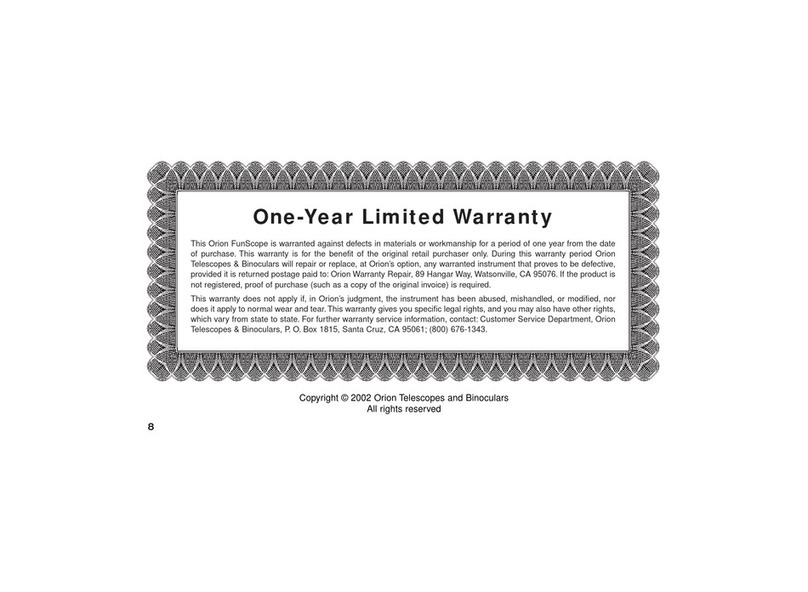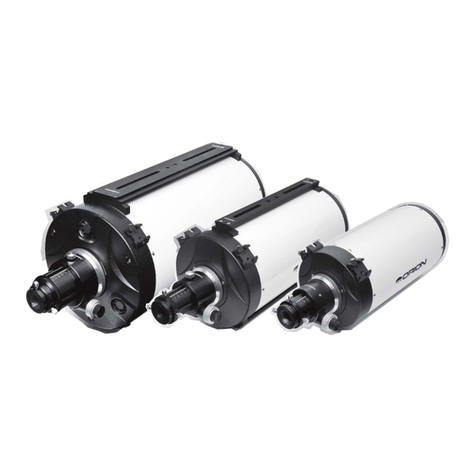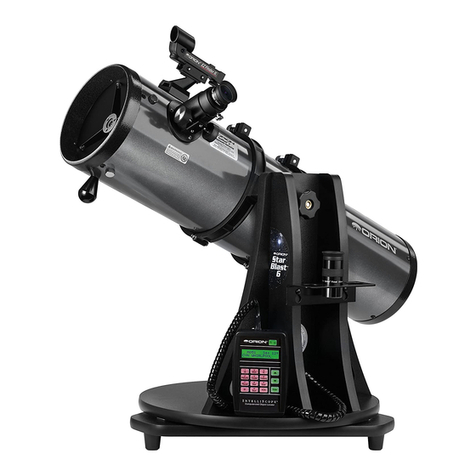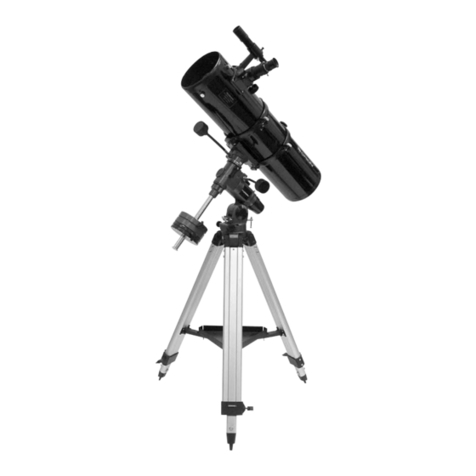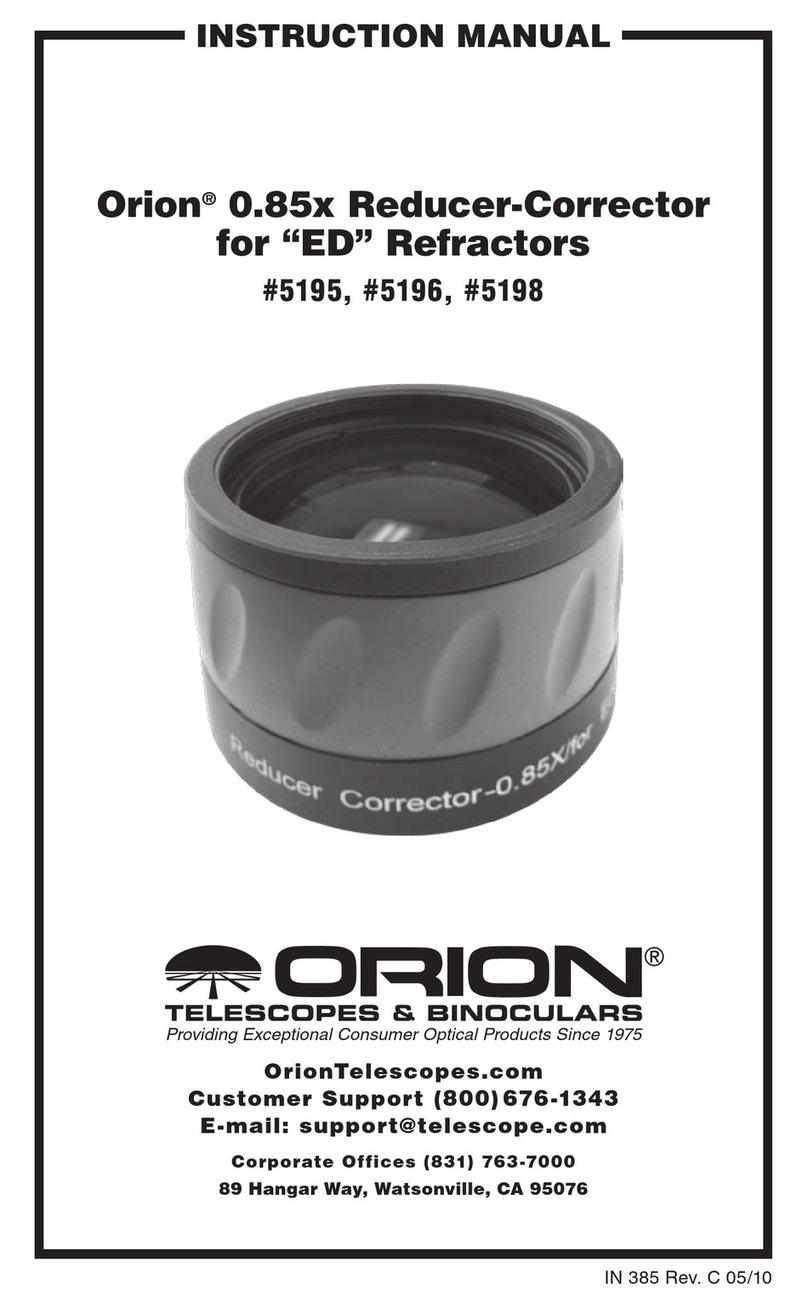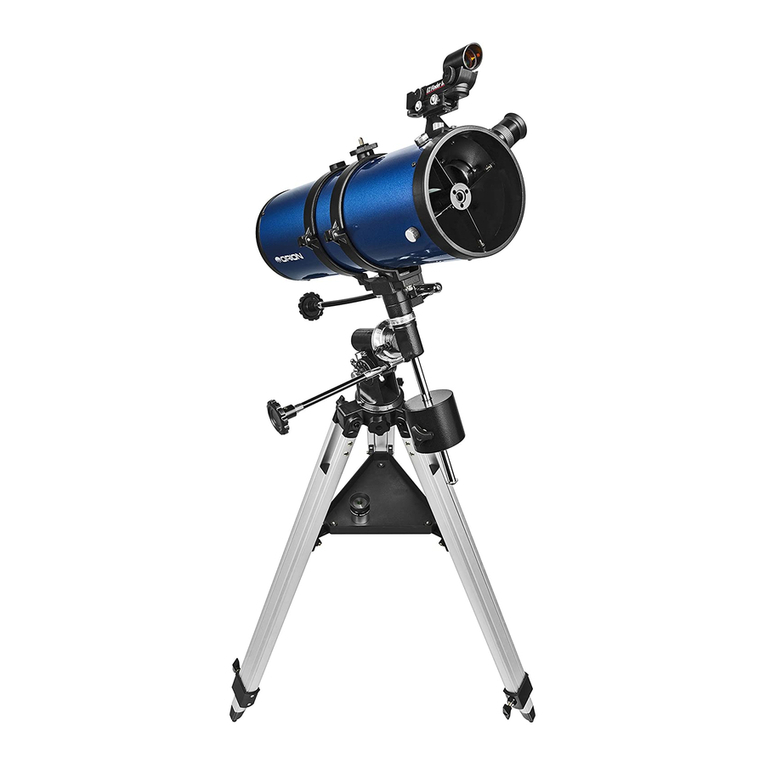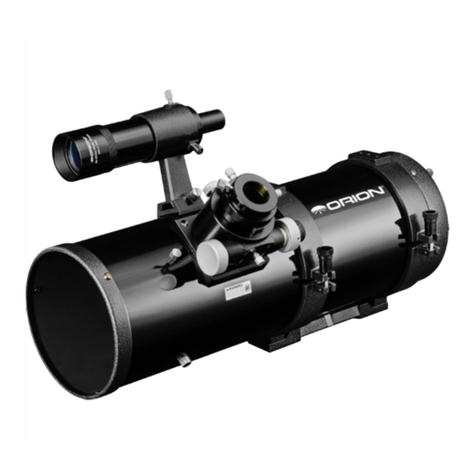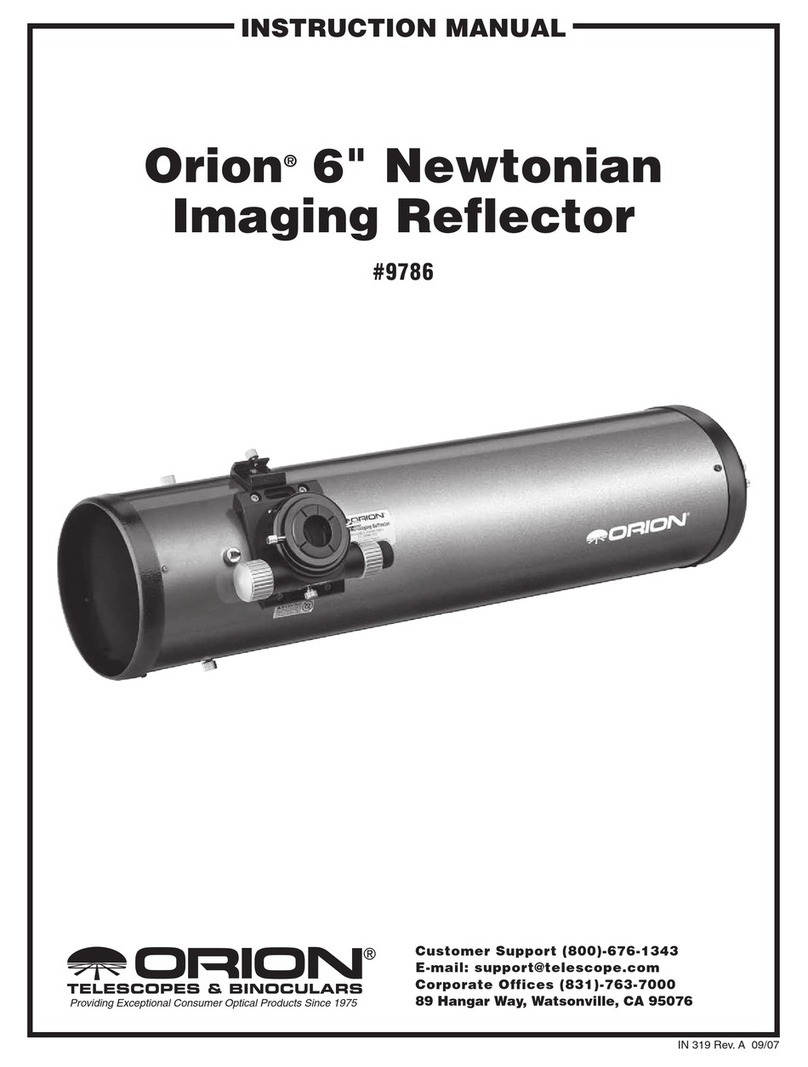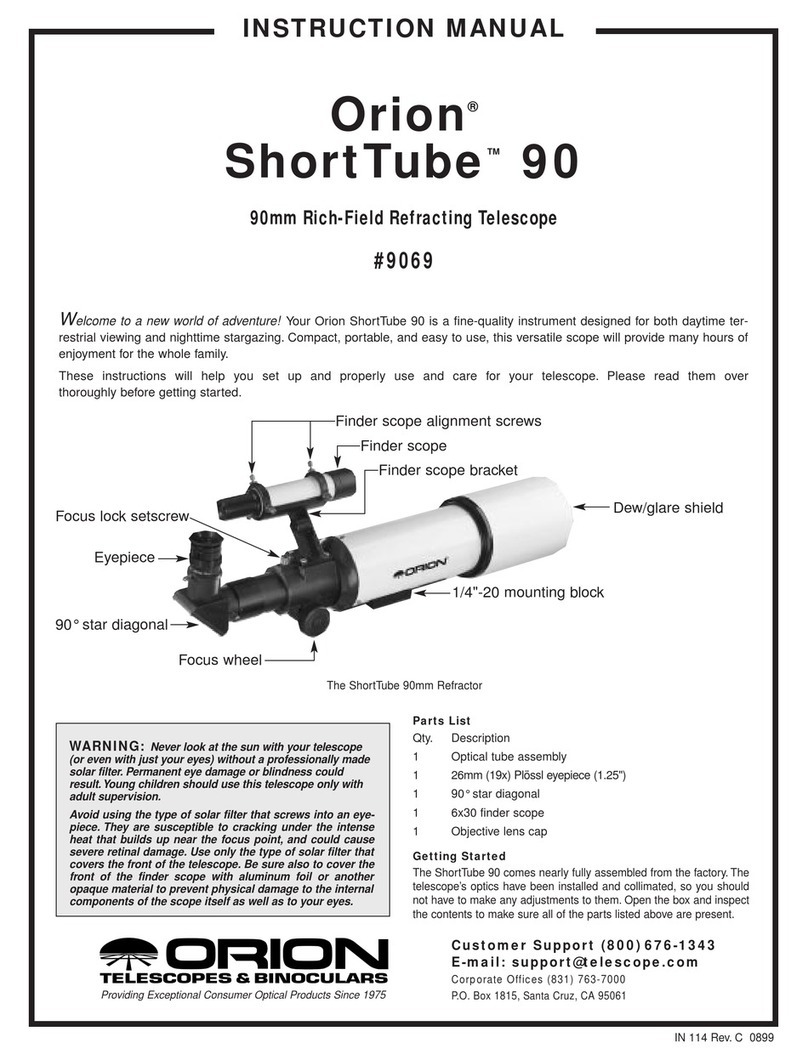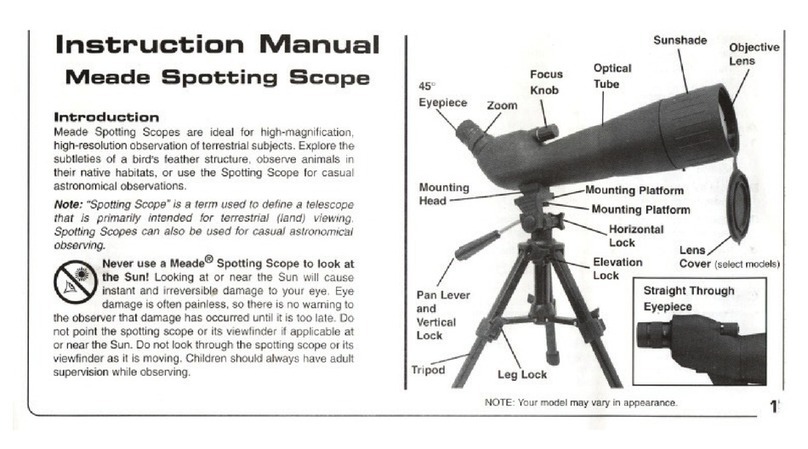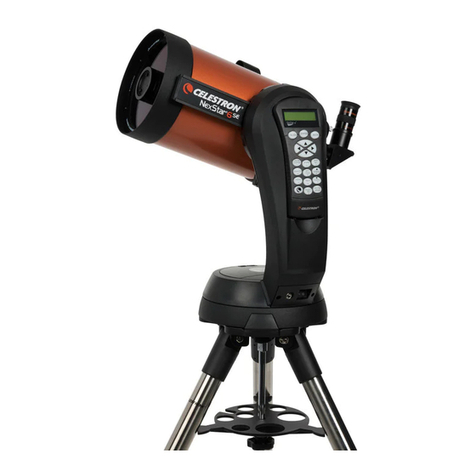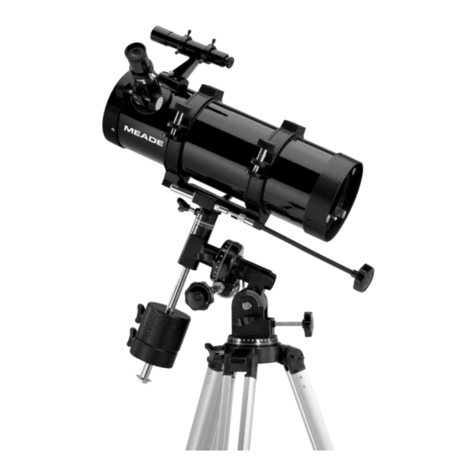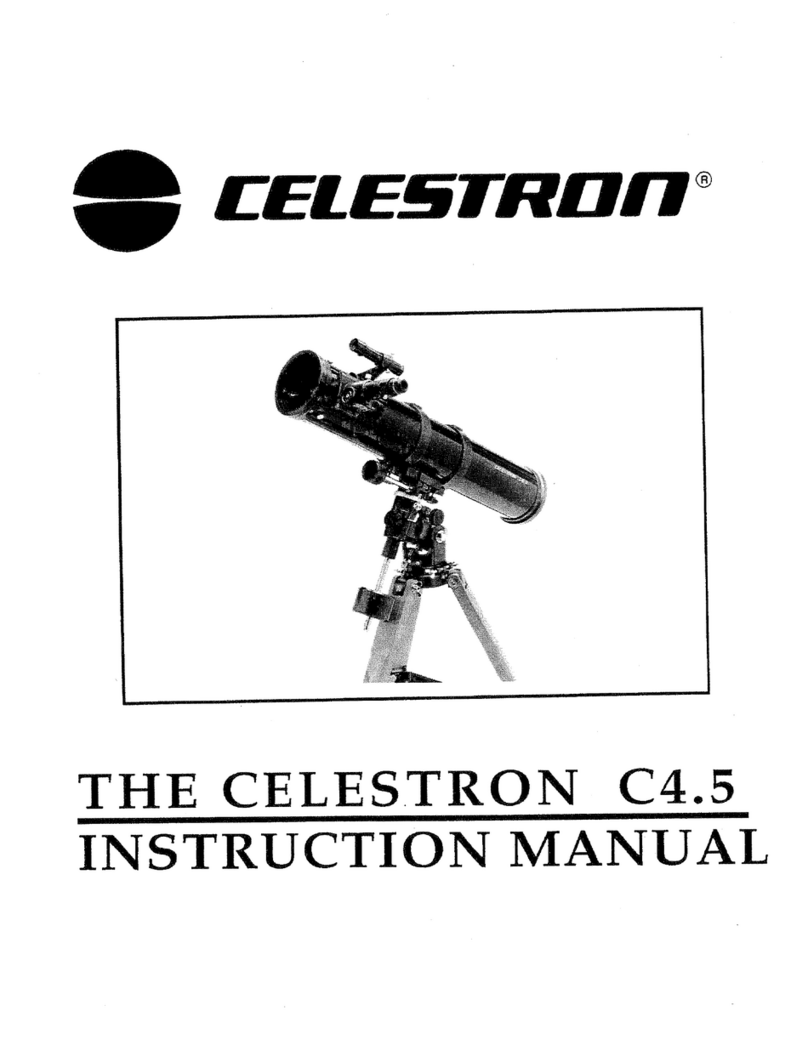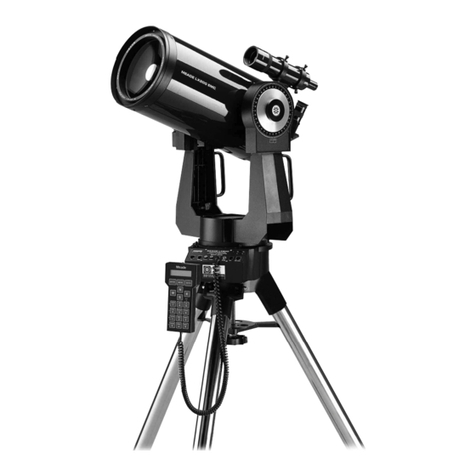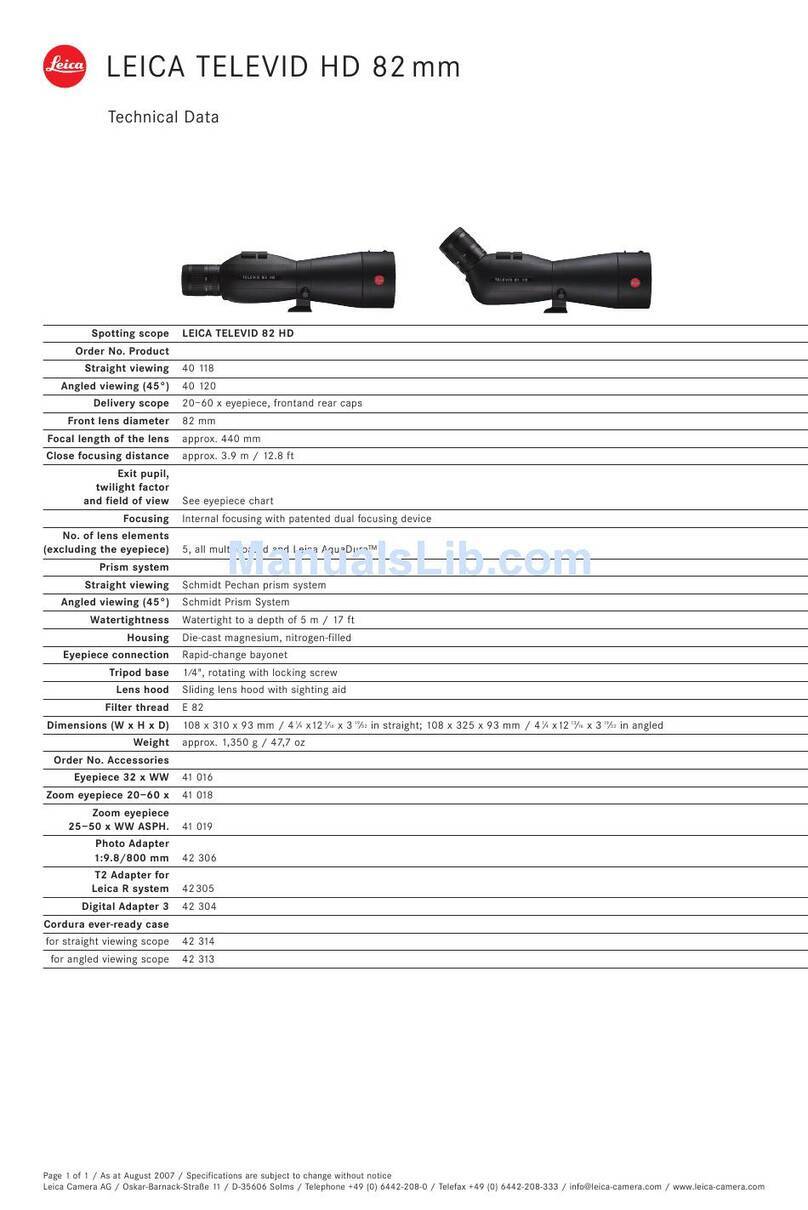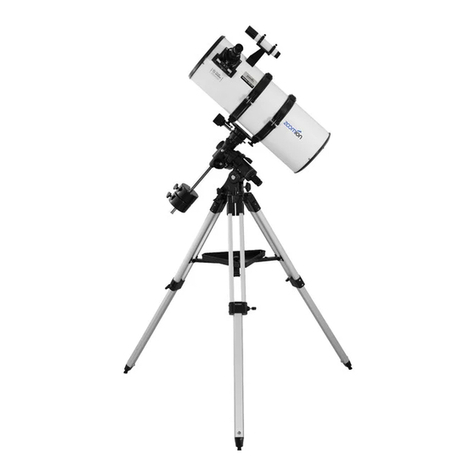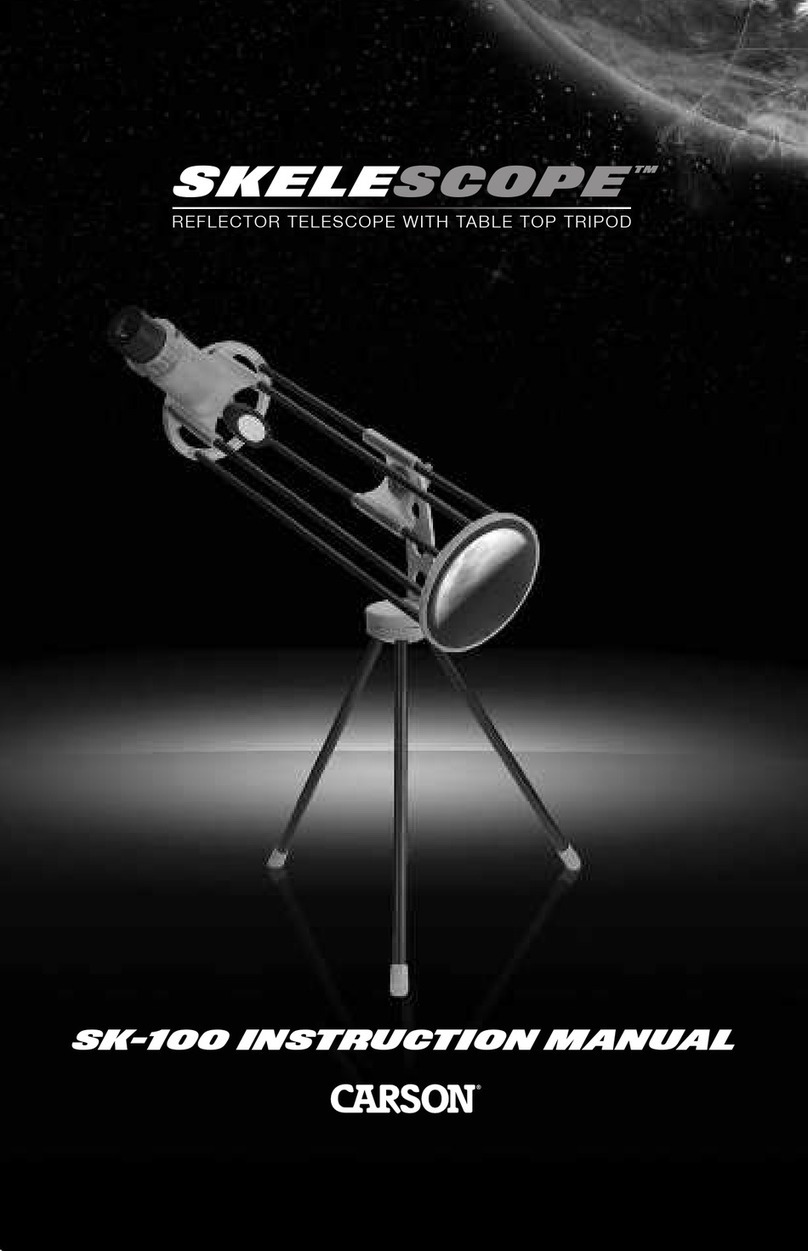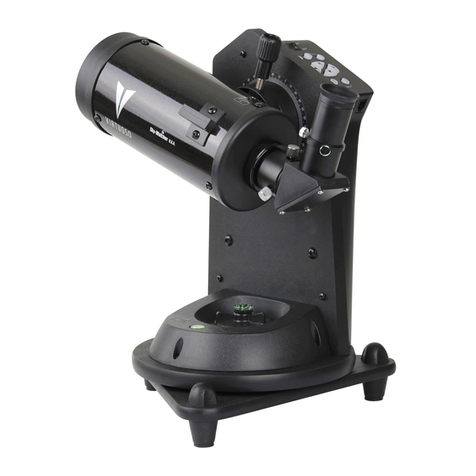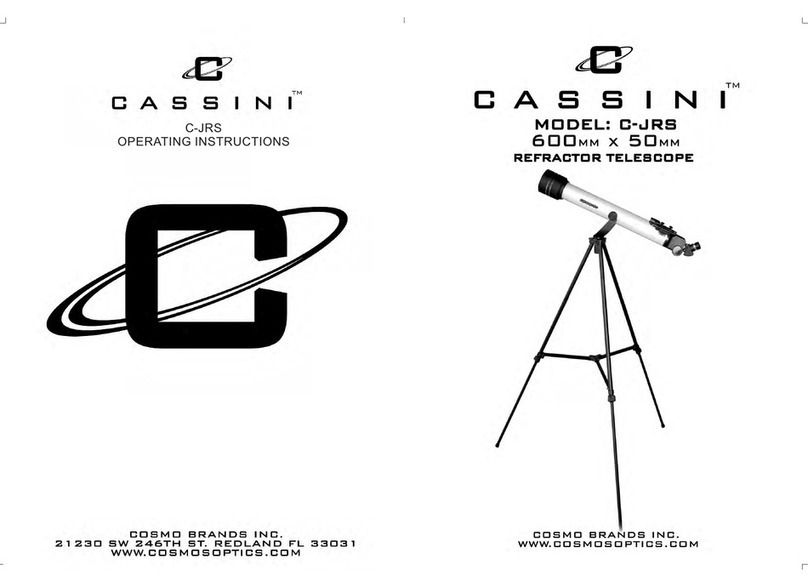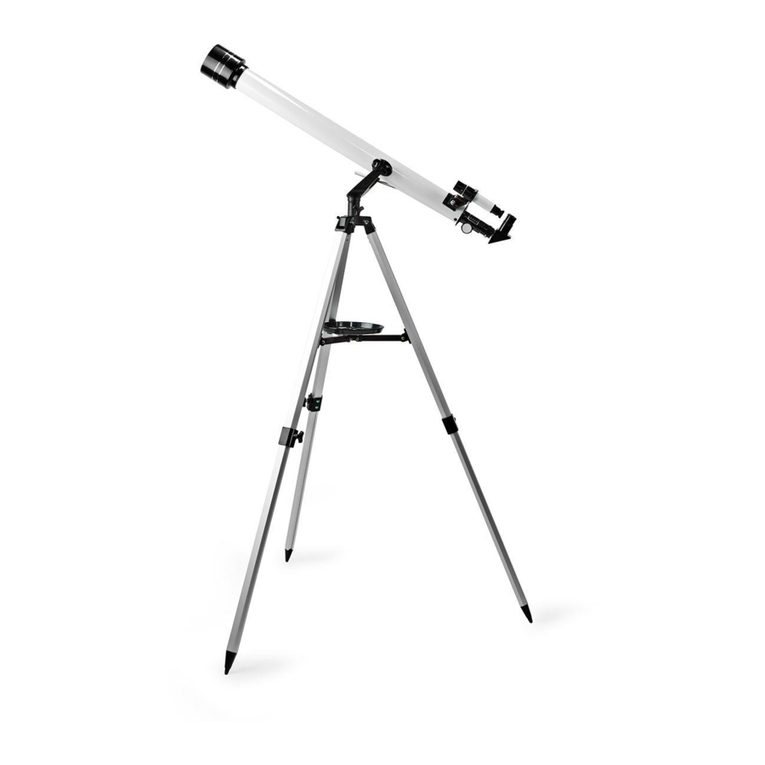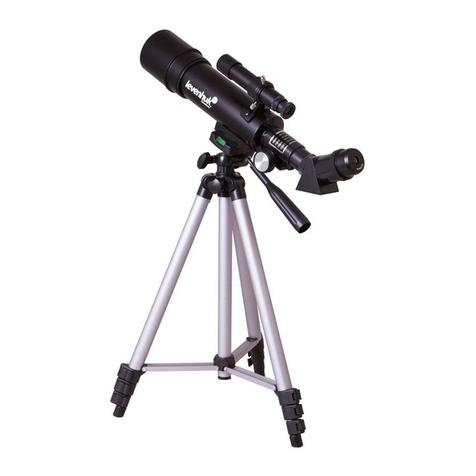
22
The BT100 is a true binocular telescope, with optical quality
and features you’d expect of a fine astronomical instrument.
The included eyepieces provide 24x magnification, but option-
al 1.25" interchangeable eyepieces (available from Orion) let
you vary the magnification for deep-sky, wide-field solar sys-
tem, and terrestrial viewing – with 3D-like depth of field! The
90° eyepiece viewing angle makes nighttime observing more
comfortable, as the binoculars don’t need to be positioned
above your head when looking upwards. The rugged body
construction and waterproof design ensure the BT100’s will
provide viewing enjoyment for years to come.
Please take the time to read this instruction sheet before
using your new binoculars.
Using a Tripod
When observing with large-aperture binoculars like the Orion
BT100s, a sturdy photo tripod or altazimuth mount is required.
This is because the weight and magnification of the binocu-
lars make it impossible to hold them steady with your hands.
To attach the BT100 to a photo tripod, simply thread the
tripod’s ¼"-20 mounting stud into the threaded hole on the
underside of the BT100’s mounting plate. The tripod must be
able to support approximately 15 lbs., otherwise it may not be
stable enough for the BT100.
To attach the BT100 to an altazimuth mount that utilitzes a
dovetail holder, like the Orion VersaGo mount, an optional
dovetail L-bracket is needed. The L-bracket connects to the
BT100’s mounting plate, and has a dovetail bar that goes
directly into the mount’s dovetail holder. Contact Orion to
order this optional L-bracket.
Inserting the Eyepieces
Perhaps the most unique feature of the BT100 is its ability
to utilize standard 1.25" eyepieces. The two supplied Sirius
25mm eyepieces provide a magnification of 24x, but other
magnifications can be obtained by purchasing optional eye-
pieces from Orion. Most standard 1.25" eyepieces will work
with the BT-100, as long as the eyepieces are capable of
seating fully into the eyepiece holders.
To install the eyepieces, first remove the cover caps from the
binoculars and eyepieces. Then, simply insert the eyepieces
into the binoculars’ eyepiece holders (Figure 1). Push the
eyepieces into the holders until they are fully seated. Twist
the knurled locking ring to lock the eyepieces into place. To
remove the eyepieces, simply loosen the locking ring and pull
the eyepieces out of their holders.
Extending the Lens Shades
Another nice feature of the BT100 is its extendable lens
shades (Figure 1). These increase image contrast by prevent-
ing glare (unwanted stray light) from entering the objective
lenses of the binoculars. They also slow the formation of dew
on the objective lens exteriors.
To use the lens shades, grasp them with your fingers, and pull
them outwards. You will need to retract the lens shades to fit
the binoculars into its case.
Adjusting the Distance Between Your Eyes
(Interpupillary Distance)
Adjusting the interpupillary (IP) distance of the BT100 is
incredibly easy. Simply turn the chrome IP knob located
between the eyepieces. Rotate the knob until the distance
between the eyepieces matches the distance between your
eyes. When properly adjusted, you should see a single, round
field of view when looking through the binoculars. Make this
adjustment before you attempt to focus the binoculars.
Focusing
The BT100 binoculars utilize individual focus eyepieces. This
makes the binoculars mechanically more rugged than similar
center-focus models, and generally maintains optical align-
ment better. For astronomical observation, individual focus
eyepieces are usually preferred.
Pick an object in the distance to view. At night, best focus will
be achieved by focusing on a bright star. Cover your right eye
(or cover the right objective lens of the binocular) and focus
the left eyepiece by rotating the rubber grip ring on the eye-
piece holder it until the image appears clearest. Then cover
your left eye (or cover the left objective lens of the binocular)
and focus the right eyepiece by rotating the eyepiece hold-
er until the image appears clearest. The binoculars are now
focused. If you want to view an object at a different distance,
re-focusing of both eyepieces is required. Also, changing eye-
pieces may require some slight refocusing.
For astronomical observation, all objects will always appear
focused at the infinity focus point. This means you only need
to focus the binoculars once per observing session. This also
means you can take note of the diopter scale (Figure 1) set-
ting for each eyepiece when focused on an astronomical
object, and return to those settings when observing another
night. You will find this to be a great convenience!
Since everyone’s eyes focus images slightly differently, differ-
ent observers will need to refocus the binoculars for their own
vision.
Congratulations on your purchase of a pair of quality Orion binoculars. The BT100 Binocular
Telescope provides the large light grasp you need for astronomical observation, but unlike a
telescope, allows you to use both eyes simultaneously for viewing. This results in better image
resolution, contrast, and brightness than a similar sized telescope can provide.
WARNING Never look directly at the Sun through
your binoculars without professionally made
solar filters, even for an instant, or permanent
eye damage could result. Young children should
use these binoculars on sunny days only with
adult supervision.
